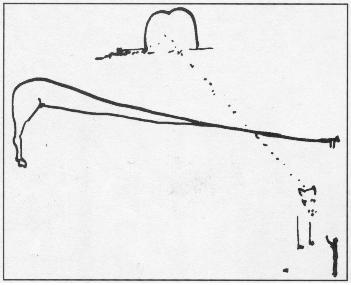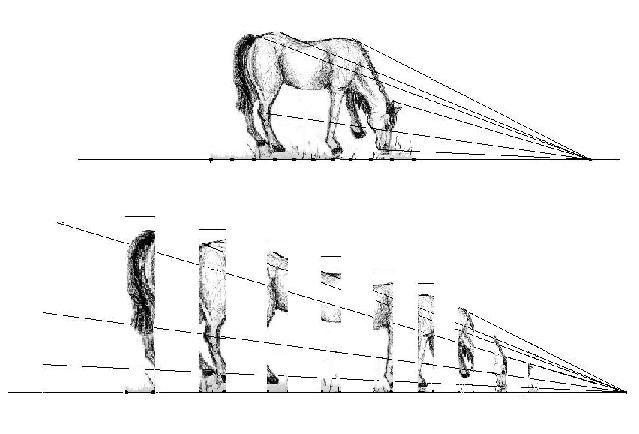Given nothing but Dali's sketch below, it was difficult to see what exactly we were trying to accomplish. How did this distortion work? Obviously one could not simply stretch a sculpture randomly. There had to be something we were missing.

Human vision, while amazingly complex and accurate, has one major flaw: its inability to determine distance from the viewpoint. Three methods are used to decide the location of an object:
1. known size of an object and it's relative representation on the retina;
2. stereo vision, which relies on each eye receiving a slightly different
input due to the space between the pupils;
3. parallax, which is due to the fact that upon moving the viewpoint (even
from one eye to the other) close objects move more in relationship to
their backgrounds than do those that are farther away.
But with this clue removed or skewed, there is little the eye can do.
The retina is essentially a 2-dimensional surface and so is unable to
contain more than two dimensions of information. This means that if the
input to the retina stays the same in those two dimensions, it is possible
to distort an image without changing how it looks from a particular point.
This is precisely the idea behind Dali's sketch, we realized. By moving
things along lines directly away from or towards the pupil and changing
their size accordingly, the image is maintained. All that is necessary,
then, is to construct the lines from the viewpoint and maintain the points
along them, and one has the freedom to play with the image however one
pleases:
